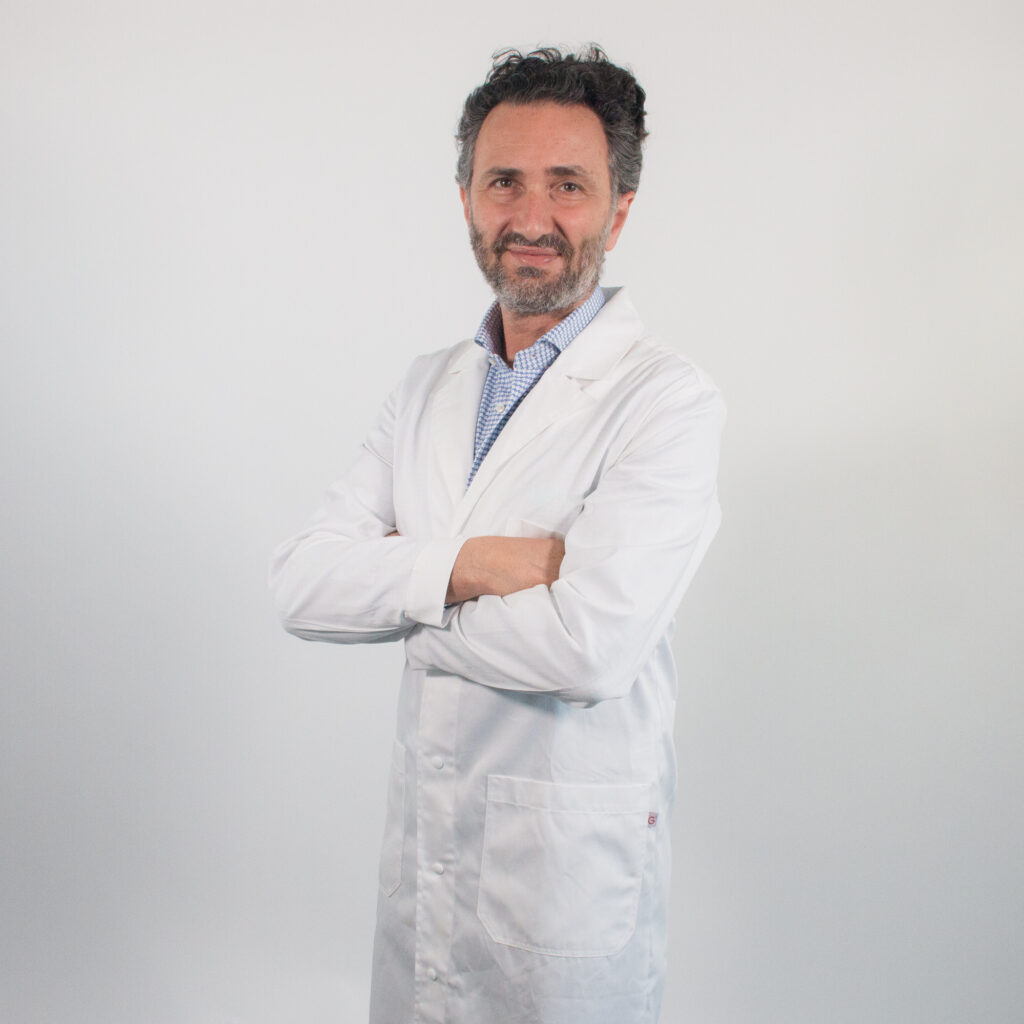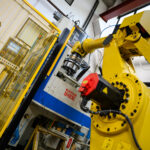Spondylolisthesis is a pathological condition characterised by a forward displacement of a vertebra with respect to the underlying one. Surgeon Francesco Finocchiaro, head of the Operative Unit of Vertebral Surgery at the Rizzola Clinic in San Donà di Piave (VE), tells us about it. Thanks to considerable investments in advanced technologies and the continuous improvement of diagnostic and surgical techniques, the clinic in Veneto guarantees high quality, safety and comfort for patients and their families. Since 2020, it has been the European Reference Centre for Vertebral Robotic Surgery.
by Roberta Imbimbo

Dr Finocchiaro, what is meant by spondylolisthesis?
Spondylolisthesis is a pathological condition characterised by a slow and progressive forward displacement of a vertebra with respect to the underlying one. According to Marchetti and Bartolozzi’s classification, spondylolisthesis can be divided into evolutionary and acquired spondylolisthesis. The latter, in turn, are subdivided into traumatic, post-surgical, pathological (from tumours and bone diseases) and degenerative (due to arthritic degeneration of the intervertebral disc or joint facets).
Developmental spondylolisthesis mainly affect individuals in childhood or youth and are often linked to alterations or abnormalities in the development of the bony parts of a vertebra or a defect in ossification of the vertebral isthmus. They are caused by a lack of ossification of the conjugating cartilage at the level of the isthmus, known as spondylolisthesis, which generates a separation between the vertebral body and the posterior arch.
Acquired spondylolisthesis, on the other hand, occurs as a result of the wear and tear of the articular masses and the vertebral disc, which progressively become hypermobile and generate less resistance in the articulation of the vertebrae, and thus considerable instability. Isthmic spondylolisthesis affects 6-8% of adults and 4-6% of individuals between the ages of 6 and 18, while it is rare before the age of 5. Degenerative spondylolisthesis, on the other hand, affects 13-16% of adults.
What are the symptoms?
In young subjects, the symptom is generally back pain, so-called lumbago, which tends to be exacerbated by upper body movements and resolves with bed rest. In adults, acute episodes of low back pain may occur, alternating with periods of temporary well-being. However, the pain gradually tends to become persistent and radiate to the lower limbs, impairing daily activities and sports. When instability is also associated with compression on the nerve structures, radicular symptoms such as sciatica may be associated. In some cases, the patient walks for 100-200 metres but is then forced to stop due to pain. There are circumstances in which spondylolisthesis and often spondylolysis can be completely asymptomatic or not very symptomatic.
How is this condition diagnosed?
It is usually discovered by chance during radiological examinations that patients undergo for other reasons. In the presence of symptoms, confirmation of the extent of the vertebral displacement and, thus, the severity of the pathological condition, can only be obtained with an X-ray examination.
How is spondylolisthesis treated?
Treatment depends on the extent of the symptoms and the age of the patient. In young patients, in the absence of painful symptoms, observation alone and possibly a periodic radiographic check-up to assess the progression of the vertebral slippage is recommended. If lumbar pain becomes frequent, conservative treatment is proposed: in the acute phase, when the clinical picture is dominated by low back pain, anti-inflammatory and muscle relaxants are administered. Once the acute phase has subsided, targeted physical rehabilitation therapy is prescribed.
In adults, i.e. in the case of isthmic or degenerative spondylolisthesis, conservative treatment is recommended in the initial stages, i.e. medication, physiotherapy or the use of braces. If this approach does not work and the symptoms worsen, the surgical option is evaluated. The latter becomes the treatment of first choice if the radicular disorders in the lower limbs – sciatalgia, neurological deficits – are severe and particularly disabling.
What are the surgical frontiers for treating this pathology?
In addition to traditional open surgery reserved for the most complex cases in which the muscle tissue is torn and open-field surgery is performed, thanks to improvements in surgical techniques and technological progress, it is now possible to operate minimally invasively, without the need to open the spinal canal (indirect decompression). This is made possible, in particular, by robotics: the operation is ‘patient-sized’, i.e. more and more precise, effective and accurate, with a consequent reduction in operating complications and hospitalisation times. The average hospital stay is 48/72 hours and post-operative recovery much faster.
The Rizzola Treatment Centre is an all-Italian excellence. Tell us about it!
Founded in 1946 and affiliated with the National Health Service, the Rizzola Clinic is today the European Centre for Vertebral Robotic Surgery. Thanks to huge investments in technological innovation and to multidisciplinary and highly specialised teams, the Veneto-based facility is able to ensure the patient the best level of diagnosis and, when necessary, surgery.
Instrumental diagnosis is supported by high-field MRI, thin-layer CT and EOS digital radiology. A highly advanced robotic neuronavigation platform and a three-dimensional intraoperative imaging system also allow surgery to be performed with millimetric precision, significantly reducing error margins with optimal results.
The fact that the Rizzola Clinic operates in agreement with the National Health Service makes its technological and professional excellence accessible to all.
For more info (https://www.rizzola.it/)






















































